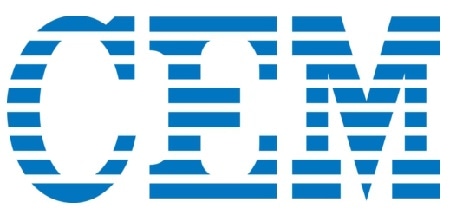Peptide synthesis is a complex process involving several synthetic steps. Solid-phase peptide synthesis (SPPS) was the initial step in transforming the synthetic process. The process was further accelerated by microwave synthesis by shortening the time needed for peptide synthesis using microwave irradiation, which reduced the time taken for both the coupling and deprotection steps. The next step is the reduction of time needed for peptide synthesis and the quantity of waste produced during the synthetic process. These steps can be conveniently accomplished with the Liberty Blue without compromising the high purity of the microwave peptide synthesis.
.jpg)
Figure 1. The Liberty Blue
The Liberty Blue
The Liberty Blue (Figure 1) uses an unprecedented combination of hardware and chemistry advances in the transformation of peptide chemistry. The absence of restriction points leads to rapid reagent addition. The Liberty Blue has further optimized the microwave steps to apply the maximum possible amount of microwave energy to the peptide without causing over-heating of the sample or unwanted side reactions. This results in a 30-fold faster system compared to traditional (non-microwave) synthesis, five folds faster than other alternative techniques, and over 80% faster than first-generation of microwave systems.
Demonstration of Viability of Liberty Blue
The capability of the Liberty Blue is demonstrated here by synthesizing three different peptides with various synthetic challenges. Thymosin (SDAAVDTSSEITTKDLKEKKEVVEEAEN-NH2) features β-branched side chains and ABC 20-mer (VYWTSPFMKLIHEQCNRADG-NH2) poses a risk of epimerization at Cys and His residues in addition to aspartimide formation. The third peptide is ABRF 1992 (GVRGDKGNPGWPGAPY) presenting the risk of δ-lactam formation.
Synthesis of these peptides was carried out in conventional (non-microwave) system, first-generation microwave system, and in the Liberty Blue featuring the new rapid microwave method. In each case, the synthesis rate was raised, yielding a peptide that was synthesized more rapidly with comparable or better crude purity.
Conventional synthesis and traditional microwave synthesis yielded comparable waste, while the amount of waste generated during the synthetic process on the Liberty Blue was very less (Table 1).
Table 1. Peptide Synthesis Results with the Liberty Blue
| Peptide |
Liberty Blue Synthesis Time (% faster than 1st gen MW/conv) |
Liberty Blue Solvent/Reagent Waste (% reduction) |
Liberty Blue Crude Purity (%) |
| Thymosin |
2:20 (85/95) |
344 mL (85) |
60 |
| ABC 20-mer |
2:15 (81/94) |
248 mL (85) |
70 |
| ABRF 1992 |
1:47 (81/93) |
188 mL (86) |
80 |
The time taken for synthesizing each peptide took less than 2½hr with ≥ 60% crude purity. The amount of waste produced was below 350mL per peptide for all peptides tested. A shorter synthesis was achieved in all cases by lowering the cycle time to the only 4min. The shortened 4-minute cycle consists of all steps necessary for coupling the next amino acid in the sequence, including the microwave deprotection and coupling, reagent addition, and washing.
Compared to conventional synthesis, the microwave synthesized peptides had a comparable or better purity in most cases. Crude purity of Thymosin improved by 1.7 times, from 35% to 60%, while ABC maintained a comparable crude purity (70% each) and the crude purity of ABRF 1992 improved 1.4 times, from 56% to 77%. Figure 2 shows example chromatographs for Thymosin.
.jpg)
(A)
.jpg)
(B)
Figure 2. Example chromatographs for Thymosin. A. conventional synthesis and B. Microwave synthesis.
Conclusion
CEM has further transformed peptide synthesis with the launch of the all-new Liberty Blue System. The Liberty Blue is the only peptide synthesizer capable of synthesizing a 30-mer peptide in below 2hr with less amount of waste generation.
About CEM
CEM is a company based on innovation that touches many different industries and scientific disciplines. It helped pioneer the field of microwave chemistry and has long been recognized for its expertise on the subject through publications and awards.
For more than 35 years, CEM has been designing and developing laboratory instruments and scientific methods (both microwave-based and non-microwave technologies) that are used by major companies, prestigious research institutes, and universities around the world.
CEM is the largest provider of microwave laboratory systems worldwide and has sold over 35,000 systems. The company also has the largest portfolio of microwave technology patents worldwide with over 300 patents. It has subsidiaries in the UK, France, Germany, Italy, and Japan and distributors in over 50 countries.

This information has been sourced, reviewed and adapted from materials provided by CEM Corporation.
For more information on this source, please visit CEM Corporation.